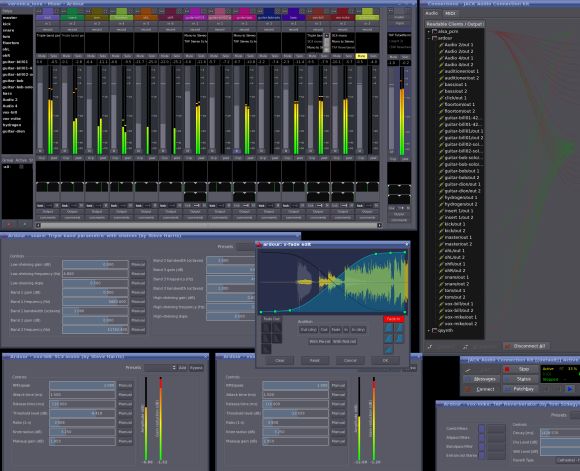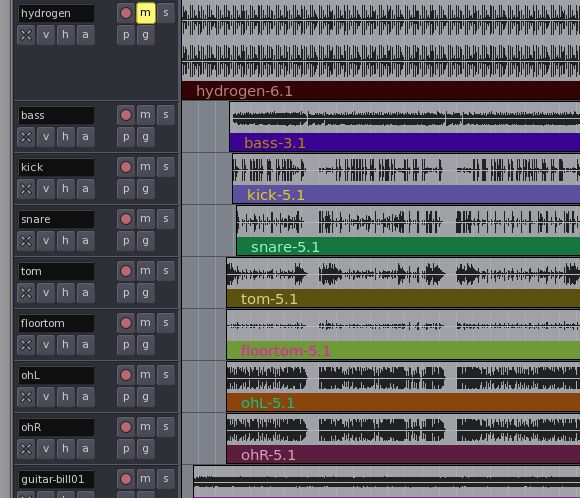
Ardour, the free, open-source audio workstation for Mac and Linux, received a major 2.0 release on April 30. Now, this is the point where you’d normally expect to see the same, boring list of feature improvements that commercial manufacturers release as bullets in each release. But when I asked the Ardour project lead Paul Davis to say something about the new version, he responded with something — well, unorthodox:
Audio on Linux sucks, you can’t make music on it, there are no soft synths, my plug-ins don’t run, nobody can configure Linux, my hardware doesn’t work on Linux, it can’t open Pro Tools sessions, it doesn’t do MIDI sequencing which makes it about 10 years behind the curve, Reaper is better and changing faster, it doesn’t run on Windows, why bother?
Sorry to disappoint those of you ready to troll in comments; Paul just took your ammunition.
Ardour 2.0 Release
Whew! I’m glad we got that out of the way. Now, having dispensed with the typical PR hype (yeah, that should silence any comment trolls), the 2.0 “bullet points” actually do look quite nice:
- New UI, with better design, more accessible menus, and instant accelerator key assignments right in the menu.
- Destructive recording (“dubbing”) a la X-Dubber. (See an in-depth GearSlutz thread for more.)
- Undo/redo throughout the program from startup to shutdown.
- Improved VST support.
- New control surface support, including Frontier Design’s Tranzport and Mackie Control-compatible devices.
- Lots o’ other stuff (countless smaller improvements).

Let’s get right down to it: can you actually use Ardour to make, you know, music? In the case of the commercial DAWs, odds are you already know someone making mixes with Cubase, SONAR, DP, Logic, Live, and whatnot. And if you ever listen to music period, you’ve heard something made in Pro Tools. Paul dug up some examples of different mixes from the Ardour user base. Ardour can be a great choice on the Mac, and I know people using it on Mac OS. In this case, though, we have music not only made with Ardour, but on Linux.
None of these musical samples are necessarily my kind of music, but they demonstrate the potential range possible with Ardour, as with any tool of a certain sophistication level. The difference here is that the tools are open source. From Spain, Carlos Pino uses Ardour along with guitar recordings, the Hydrogen drum app, and various soft synths — all open software:
http://ardour.org/files/after_the_pain.mp3
http://ardour.org/files/open_horizon.mp3
And in entirely different directions:
Some glitchy minimalism for Thorsten Wilms:
http://www.archive.org/download/the_sample/thorwil__sample.mp3
And acoustic guitar improvisation from Linux audio guru Dave Phillips:
http://linux-sound.org/meditation-improv.mp3
It’s my general feeling that software tools are often unfairly associated with certain kinds of music. Even if you hate everything you’ve just heard (or love each), you have to concede, you can make any kind of music you want.
I’m especially surprised that Ardour hasn’t received wider adoption in cash-strapped institutions and schools. You’ll often see people installing the open source audio editor Audacity, but Audacity is an extremely limited application for many audio editing purposes, particularly when it comes to multitracking. Ardour is a full-blown DAW by any measure; there’s simply no comparison. I think, ironically, it’s Ardour’s advanced feature set that may have earned it less publicity — most of the general computing public doesn’t touch DAWs in the first place, though a simple wave editor like Audacity might be accessible.
Elsewhere:
Ardour 2 on O’Reilly Digital Media, by Brad Fuller, who knows more about Linux audio than I do
And other uses of Ardour: Anton Marini, who has recently begun writing for us over on Create Digital Motion, uses standardized Ardour templates to record the weekly laptop jam Share here in New York.